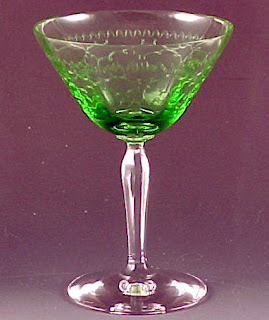I buy glass on eBay and so far have had mixed results. Some pieces have been far more worn than described, some have had big chips or came broken due to poor packing. And some have been wonderful purchases, just as described, shipped quickly and carefully.
I only started buying glass in 2007 and it gave me a new appreciation for a good refund / return policy and careful descriptions. Now when I find appealing glass I email the seller to confirm condition. Sellers respond almost always, although a few don't bother, and most of the time they report everything is fine. About 1 in 4 comes back with a damage report. It's interesting to see whether they update their listings - some do and some do not.
Even with the extra checking there have been some unpleasant surprises. Since those experiences I have liberalized my guarantee policy and now offer full refund on return, including shipping both ways, if the piece does not match the description. A few pieces with damage that is described in the listing are specifically restricted to item price only with shipping not refunded. That's in case someone doesn't read the description (yes, it happens) or doesn't realize how something looks in person. Buyers do have a responsibility but sellers need to be reasonable and accurate.
Despite this liberal guarantee a recent buyer left me a neutral due to a scratch. I checked the piece over before shipping and didn't see anything wrong, but he must have been disappointed. He didn't contact me to complain or ask for a refund. That puzzles me since I always complain if pieces are not as described, but we're all different.
So sellers, if you want to see why buyers are fussy, go be a buyer yourself.
 Fostoria's Coronet is one of their less-well known patterns, which is hard to understand since it is far more classy and elegant than some of their best known patterns. Coronet has the three wavy lines that you can see in our ice bucket and many of the pieces have scalloped rims.
Fostoria's Coronet is one of their less-well known patterns, which is hard to understand since it is far more classy and elegant than some of their best known patterns. Coronet has the three wavy lines that you can see in our ice bucket and many of the pieces have scalloped rims. 

















